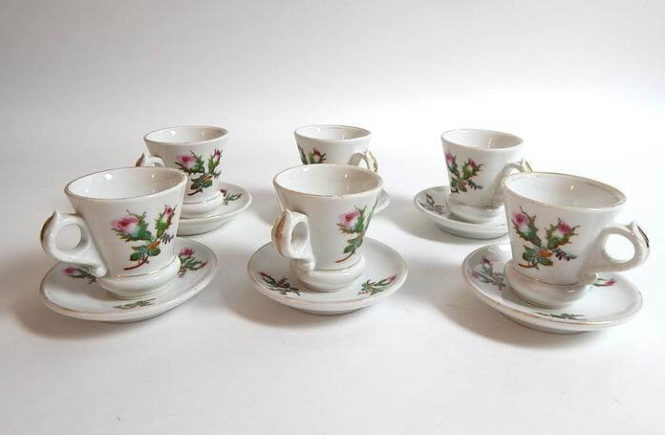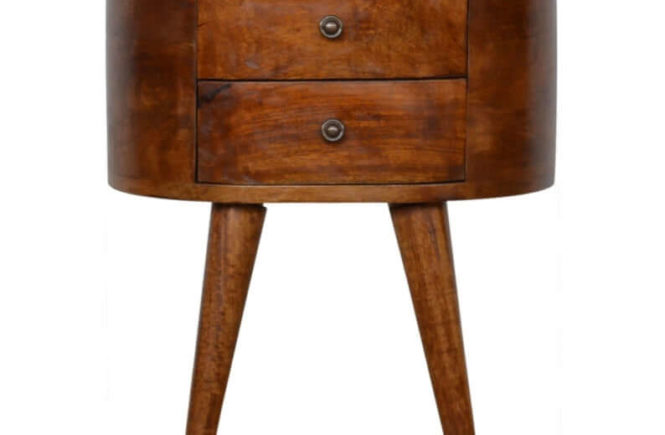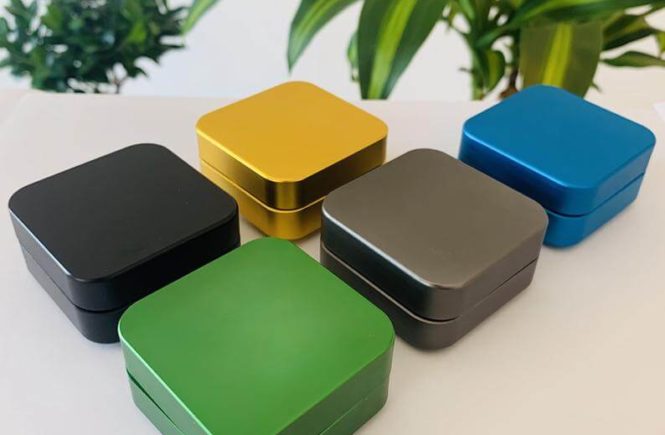[vc_row][vc_column][vc_message]Niche : Jewelry and Accessories
Shop link : https://www.etsy.com/shop/brilliessunglasses
Instagram : https://www.instagram.com/brillies.co[/vc_message][/vc_column][/vc_row][vc_row][vc_column][vc_column_text]
Tell us something about yourself, how did you get started, do you consider yourself a crafter,maker,artist…
Brillies Sunglasses was a happy accident. I’d tried and failed other businesses. I tried selling jewelry, packing supplies, soaps, etc., but, I never felt passionate about my products. I’ve always loved vintage, so when I met a vintage sunglasses supplier and realized I could turn it into a business, it just kinda made sense. It clicked. And, it worked. For the first time, I’d hit on something I loved to sell. From there, I made a point to educate myself on all-things vintage. I consider myself an intermediate vintager. I learn something new every day!
How did you discover Etsy? Did you have any previous experience in selling handmade products? Why did you start selling online?
I’m a long-time Etsy shopper, I’ve been using it since high school and rediscovered it as a seller in 2017. I started selling online to keep costs low. I didn’t have the funds to open a retail shop, so online selling made sense. At first, I was taking photos on my iPhone with a wrapping-paper backdrop. People loved it!
What products do you sell, what type of materials are used in your creations, how do you design your products, what makes your products stand out ?
We sell authentic 90’s and 2000’s sunglasses that no one else has. We source them from secret suppliers all over the United States. It’s a very old-skool operation. We spend hours sorting through vintage eyewear and pull out only the gems.
How was your experience in learning to craft, are you self-taught or did you have a mentor, how long did it take for you to be satisfied with your creations
I tried the self-taught, lone-wolf method. Big mistake. I made costly errors that could have been avoided with guidance. I fought the idea of a mentor for a long time, but now I make a conscious effort to stay surrounded by like-minded female entrepreneurs so we can learn, teach, and elevate each other. I am tremendously proud of my products, but I believe there’s always room for improvement. I do a lot of quality control to make sure only the good stuff reaches the customers.
[/vc_column_text][/vc_column][/vc_row][vc_row][vc_column width=”1/3″][vc_single_image image=”100000655″ img_size=”737×737″ onclick=”link_image” css_animation=”appear”][/vc_column][vc_column width=”1/3″][vc_single_image image=”100000654″ img_size=”737×737″ onclick=”link_image” css_animation=”appear”][/vc_column][vc_column width=”1/3″][vc_single_image image=”100000652″ img_size=”737×737″ onclick=”link_image” css_animation=”appear”][/vc_column][/vc_row][vc_row][vc_column][vc_column_text bb_tab_container=””]
What was your original goal when you opened up an Etsy shop? What impacted your decision to start selling online? Do you consider online selling as a side-job, full-time job or extra income to pay for your hobby?
My goal has always been to make this a viable, self-sustaining business. I’ve never been happy working for someone else. In the beginning, I worked as a model and bootstrapped the entire operation. I put all my extra money into it. As things progressed I was able to quit modeling and turn Brillies into my full-time job, as well as hire some extra staff to help with fulfillment, packing, shipping, branding, and social media.
Did you have any fears or reservations before opening up your Etsy shop? Were you worried about profitability or product competitiveness? What are some concerns and questions you had before you got started? How did you overcome them?
To be honest, I had a big fear of “cheesiness”. In my experience, telling someone you sell on Etsy is generally met with the same hostility as telling someone you sell door-to-door from a catalog. I truly shy didn’t tell people I was an Etsy seller until a couple of years in.
I was never too concerned with profitability and market competition. I studied marketing, so I knew how to find my target consumer and reach them through keywords. I was able to land on the front-page searches often enough to beat competitors, but it did become harder over time. It’s harder now, especially with so many bootleg items on Etsy. But, I truly believe in the intelligence of the consumer, I know they are clever enough to spot the differences between genuine vintage and handmade items vs. the cheap knock-offs.
I think I overcame my inhibitions when I had to hire someone for help. That’s when it kind of hit me – “whoa, this is a REAL business now. Stop being embarrassed. Share it”
How long did it take for you to get your first sale? Did you ever thought you would make a lot of sales in the first year? What was a goal you were hoping for? How many sales an average you get per week?
I had my first sale within 3 hours, but this is definitely not the norm. DOn’t be discouraged if it takes a few weeks to make a sale. My short-term goal was to do about 10 sales per day. We had 600 sales in our first year but experienced zero growth in year 2. There was a period where I thought we might have to close up Etsy shop because of low sales figures. We used that time to take better photos, tighten up keywords, and really dial in on creating a consumer experience for our customers. Right now, we sell between 10-30 sunglasses per day on Etsy.
Do you have a job outside Etsy? If not, are you able to commit full-time to online selling? How does your typical day look like? How do you manage time?
Etsy gave me the freedom to expand my business to the point that it now only makes up a fraction of my sales. I do a combination of Etsy, Shopify, and Wholesaling my vintage sunglasses. I’m able to commit nearly full-time, but I do the occasional modeling job here and there. The average day is a few hours in the warehouse, packing, shipping, meeting clients, and processing new inventory. Then another few hours from the home office emailing back and forth with customers and planning.
How does your manufacturing process looks like for e.g. your best selling product? Do you create products ahead of the orders? Do you customize your products, if so how? What are tools that you are using in manufacturing process?
We don’t manufacture any of our items, they’re all at least 20 years old. They are all 90’s & 2000’s, aka, Y2K era sunglasses.
What is the biggest impact on profitability of your shop? How expensive are the materials you use? How do you price your products?
We price according to the market demands. We’re slightly more expensive than other sellers, but Brillies Sunglasses are rarer and better condition. Wholesale costs can range from $7-$15 per pair, so there’s not a ton of profit. The USPS recently raised shipping costs dramatically, which has a negative effect on us since we offer free shipping. Additionally, buyers are very unsympathetic to lost or stolen packages, so you’re generally expected to replace or refund any package that goes missing. We manage these costs by using lightweight, sturdy shipping materials and working with the USPS to track down missing mail as much as we can. It’s a ton of extra work, but it’s very necessary these days.
What inspires you when you’re creating? How do you get ideas for new products? What are some methods or tools you use to get creative?
I’m inspired by my customers and my team. Brillies was built around the customer instead of the other way around. I make it a point to only offer weird, funky, unusual eyewear. Brillies serves a very specific group of people, but we especially cater to the underserved and underrepresented. I find the most inspiration in these folks. They have so much to give and share, but they haven’t been given much of a space to do it. I’m trying to change that.
Do you ship your product internationally? How do you handle postage pricing? What is average time it takes from the order to the delivery? Do you use free shipping? If so, why? How do you package your products?
We ship free within the U.S. but it’s not yet a viable option for international items. We ship in plain, white, small boxes that cost 0.25 cents apiece. They work well for small items. International packages are frequently lost, so ensure everything. Figure out if that’s something you’re going to cover, or whether to build it into your shipping cost. Learning to re-format international labels and filling out customs forms is not fun, but you have to do it correctly. Otherwise, items can get stuck in another country’s customs office for months.
[/vc_column_text][/vc_column][/vc_row][vc_row][vc_column width=”1/3″][vc_single_image image=”100000651″ img_size=”737×737″ onclick=”link_image” css_animation=”appear”][/vc_column][vc_column width=”1/3″][vc_single_image image=”100000649″ img_size=”737×737″ onclick=”link_image” css_animation=”appear”][/vc_column][vc_column width=”1/3″][vc_single_image image=”100000648″ img_size=”737×737″ onclick=”link_image” css_animation=”appear”][/vc_column][/vc_row][vc_row][vc_column][vc_column_text]
Are you worried about competitors? Does it impact your business in any way? If there are a lot of similar products, how do you make your own stand out?
I’m always worried about competitors. There are a few new sellers flooding the market with artificial vintage sunglasses, and some others selling too cheaply, which de-values the market. I try to stand out with photos. They don’t have to be professional or super-white backgrounds, but they do need to be different than other photos listed under your target category. Try to create a certain aesthetic style for your shop. That way folks can easily spot you when they come back to the search area.
How do you deal with disputes or bad rating/feedback? How do you manage presale and post sale communication and customer satisfaction?
I reach out to them and understand them. Sometimes they’re just confused – these folks are happy to update the review when you explain things like shipping delays being out of your control. But, often they are unreasonable, abusive, or hostile. I maintain a high level of communication with all my customers throughout the entire buying process, but in some cases, it’s just better to take the lump and move past it. You have to decide early on how you’re going to handle bad reviews because some customers will attempt to hold you hostage with a bad review and demand a refund + the product you sent them. It’s a delicate line you constantly toe.
Has selling on Etsy changed your life in any way? If so, how? Did you ever thought you would get this far with your shop? Have you ever been stressed dealing with customers and manufacturing products? How did you deal with that?
I never thought I would get this far. It’s a great feeling. But it is far more work than you think when you first start. I will say, in general, Etsy shoppers are kind people looking to support their communities. But there is the occasional one who doesn’t understand that it’s real people behind the shops – they think Etsy is another Amazon. Those ones are extremely stressful and merciless, but they don’t pop up too often. It’s also extremely stressful when someones opens a case against your shop because they can do it for any reason. Even if you’ve done everything correctly. I had a case opened against my shop because a girl moved a few days after ordering and was upset that her order hadn’t shown up to her old address yet. Each case counts as a sort of “strike” and if you receive too many, Etsy will shut you down.
How important is social media for your shop? What are some common tactics you use to promote your products? Do you spend money on ads outside of Etsy? How do you generate excitement/hype around your products?
Etsy and social media features don’t play well together. If you want to sell on social, you should develop your own free-standing store on a different platform. You won’t be able to have a shoppable feed on Facebook or IG with just an Etsy shop. Online shoppers are easily sketched out, so it’s really important to create a seamless buying experience. You can’t do that with Etsy yet. Social media makes up a tremendous amount of our sales, nearly 50%. But we have a separate free-standing website.
What are some things you don’t like about Etsy? If you could talk to the CEO of Etsy what recommendations would you tell him to improve sellers and customers satisfaction?
The rating systems is unfairly balanced. 1 bad review seems to carry the weight of 10 good ones. I had hundreds of good reviews, but a bad review took a point away from my star rating. Some customers have figured out how to abuse the rating system to get free products because they know Etsy sellers will bend over backward to avoid bad stars. One buyer left me a bad review because she was upset that a black pair of sunglasses she had ordered was black – she had wanted blue, even though that was never an option. Etsy needs to address this system because bad reviews have a direct impact on your sales.
What are some things you did to set your shop for success on Etsy? What is one lesson you learned the hard way?
Research! Spend 80% of your time researching your target market, your product, your competition, etc. and 20% of your time selling. Don’t waste your time trying to enter the market with a product that’s already over-saturated. If you’re selling T-shirts, cups, jewelry, etc, you have a high chance of failing unless you’re a marketing/keywording wizard. If you’re already selling these types of things, consider investing in training to learn how to make the front page. Sign up for Marmalead to search for high-volume, low competition keywords.
My hardest and costliest mistake was spending 14K on inventory I thought I could sell, but it turned out my customers didn’t like it. That pile of sunglasses is still in my warehouse to this day, it reminds me to RESEARCH everything!
What piece of advice would you give to new or established sellers or those considering to sell on Etsy? How can they avoid beginners mistakes?
I recommend building your Etsy jointly with another platform. Etsy is an ingredient in a successful business recipe, but you absolutely cannot trust it to be your savior. You have essentially zero control with Etsy, and if they ever disappeared, so does your income. If you’re just starting, make sure you’re also developing a separate online presence. Social media, Shopify store, etc.
[/vc_column_text][/vc_column][/vc_row]




